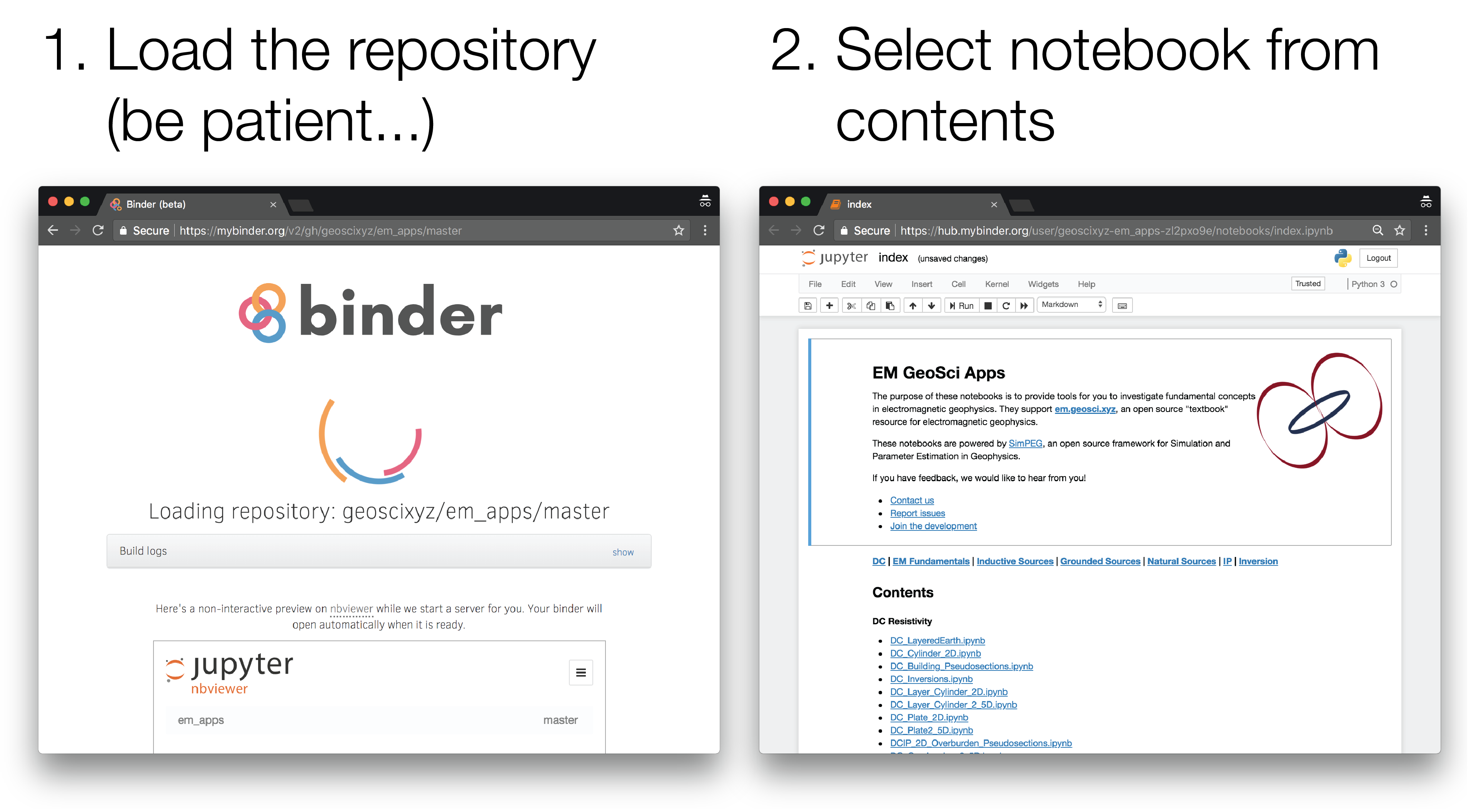overview | launching the notebooks | running the notebooks | issues | contributing
gpgLabs
Overview
This is a repo of interactive examples for http://gpg.geosci.xyz.
The notebooks are available on
Launching the notebooks
The notebooks can be run online through Binder, or downloaded and run locally.
Binder
-
Launch the binder by clicking on the badge above or going to: https://mybinder.org/v2/gh/geoscixyz/gpgLabs/master?filepath=Notebooks%2Findex.ipynb. This can sometimes take a couple minutes, so be patient...
-
Select the notebook of interest from the contents
Locally
To run them locally, you will need to have python installed, preferably through anaconda.
You can then clone this reposiroty. From a command line, run
git clone https://github.com/geoscixyz/gpgLabs.git
Then cd into gpgLabs
cd gpgLabs
To setup your software environment, we recommend you use the provided conda environment
conda env create -f environment.yml
source activate em-apps-environment
alternatively, you can install dependencies through pypi
pip install -r requirements.txt
You can then launch Jupyter
jupyter notebook
Jupyter will then launch in your web-browser.
Running the notebooks
Each cell of code can be run with shift + enter or you can run the entire notebook by selecting cell, Run All in the toolbar.
For more information on running Jupyter notebooks, see the Jupyter Documentation
Issues
If you run into problems or bugs, please let us know by creating an issue in this repository.
For Contributors
Notebook Structure
Each notebook has the following structure
- Purpose : Motivation and key concepts addressed by the notebook
- Setup : Overview of the relevant parameters in the problem
- Questions : Guiding questions related to the purpose
- App : interactive visualizations
- Explore : further questions that can be explored with the app
Setting up your environment
- to develop code for these notebooks, please see https://github.com/geoscixyz/gpgLabs
- add the notebook name and path to the index


